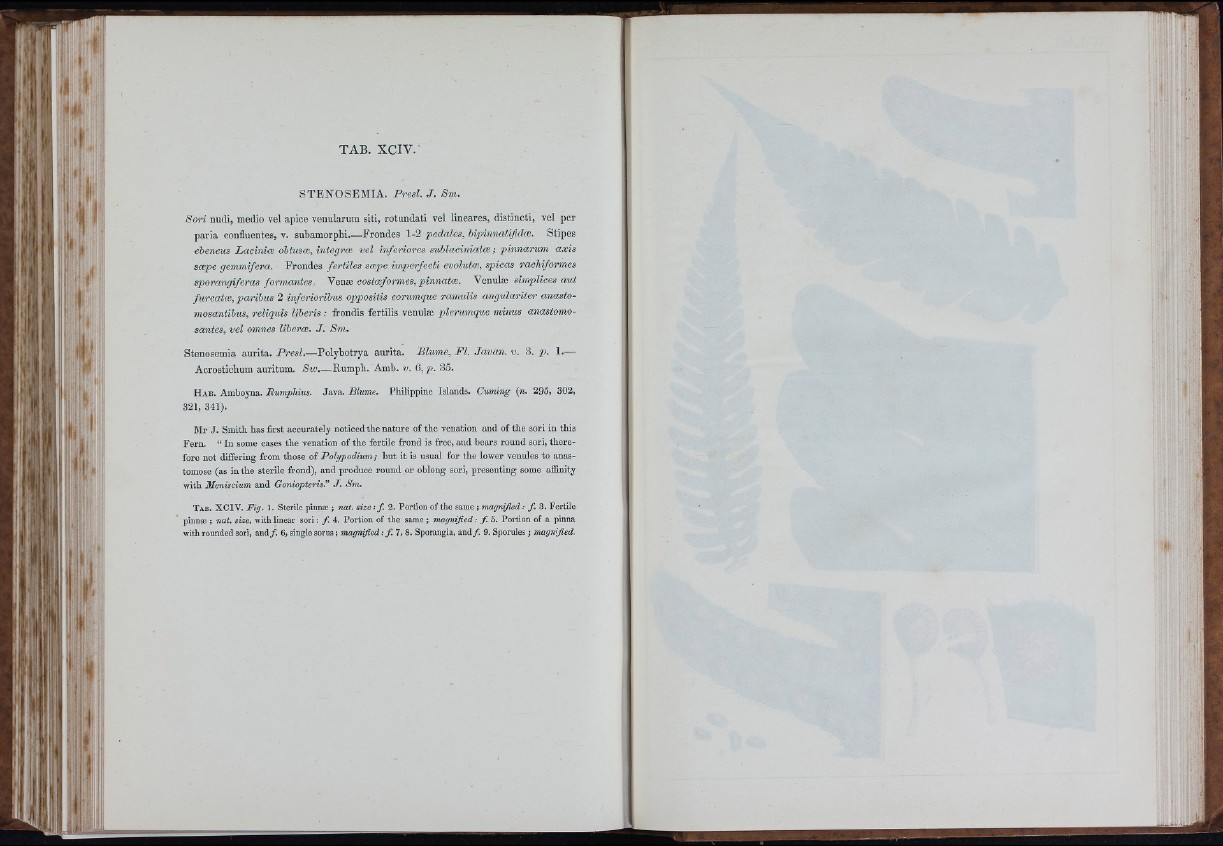
4 i
- i l i
í
fi
t í
li»
i
Irl:
tíir
m
■J
i
i I I n “
i tí'
tí' f
y
I il
t í '
r Vi
S T E N O S E M IA . P re sl. J . Sm .
S o r i nudi, medio vel apice venularum siti, rotundati vel lineares, distincti, vel per
pa ria confluentes, v. subamorphi.— Frondes 1-2 pedales, hipinnatifidoi. Stipes
eheneus Lacinice ohtusoe, integrai v el infe riore s suhlaciniatæ ; p in n a r um a x is
sæpe gemmifera. Frondes fe r tile s sæpe im p e rfe c ti evolutæ, spicas racUformes
spor angiferas fo rm a n te s : Y m æ costæformes, p in n a tæ . Venulæ simplices a u t
fu r c a tæ , p a r ib u s 2 inferioribus oppositis eom mque ramu lis a n g u la r ite r anasto^
mosantïbus, reliquis liberis : frondis fertilis venulæ p le rum q u e m inus anastomosantes,
v el omnes lïberæ. J . Sm ,
Stenosemia au rita . P r e sL— Polybotrya au rita . B lum e , F l . J a v a n . v. 3. p . 1.—
Acrostichum auritum. S w — Rumph. Amb. v. 6, p . 35.
Hab. Amboyna. Rumphius. Java. Blume. Philippine Islands. Cuming {n. 295, 302,
321, 341).
Mr J. Smith has first accurately noticed the nature of the venation and of the sori in this
Fern. “ In some cases the venation of the fertile frond is free, and hears round sori, therefore
not differing from those of Polypodium ; but it is usual for the lower venules to anastomose
(as in the sterile frond), and produce round or oblong sori, presenting some affinity
with Meniscium and Goniopteris.’* J . Sm.
T a b . X C IV . F ig . 1. Sterile pinnæ ; n at. s i z e : f 2. Portion of the same ; magnified: f 3. Fe rtile
pinnæ ; nat. size, with linear sori : f 4. P o rtio n of the same ; magnified : f . 5. Portion of a pinna
with rounded sori, and/ . 6, single sorus j magnified : f . 7> 8. Sporangia, a n d /. 9. Sporules ; magnified.